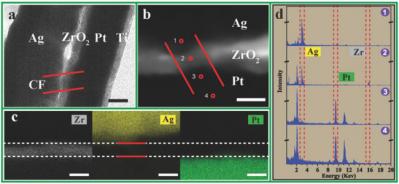Graphene and porphyrins join to create an exciting new material
Researchers at the Technical University of Munich have found that graphene can be combined with porphyrins, the molecules that convey oxygen in haemoglobin and absorb light during photosynthesis, to get a material with exciting new properties. The resulting hybrid structures could be used in the field of molecular electronics, solar cells and in developing new sensors.

The technique involves growing a graphene layer on a surface of silver to use its catalytic properties. Then, under ultra-high vacuum conditions, porphyrin molecules are added. These lose the hydrogen atoms from their periphery when heated on the metal surface, and they end up connecting to the graphene edges.





